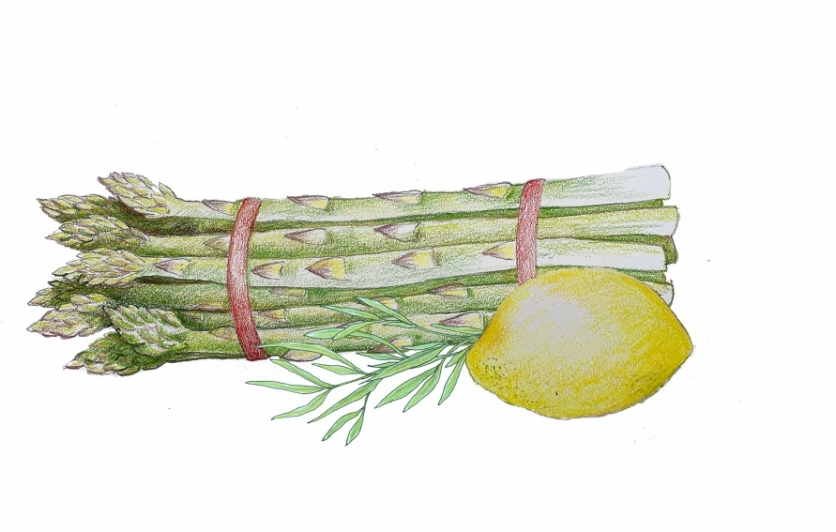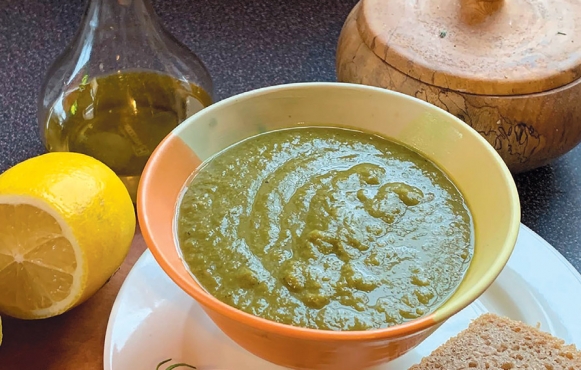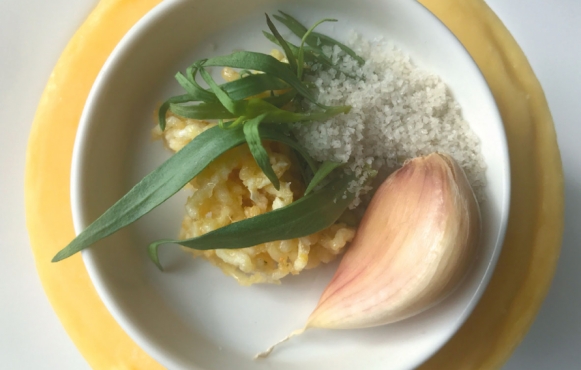Celebrating Sparrowgrass (a.k.a. asparagus)

Evidence of people enjoying asparagus dates back practically to the beginning of recorded history. You can find it on an ancient Egyptian frieze, and Julius Caesar even maintained an “Asparagus Fleet” to transport this valued veggie. From Shakespeare’s era through Queen Victoria’s reign, English speakers gave it the folksy name of sparrowgrass. Yet throughout history, this common vegetable has seemed to maintain its regal air and snob appeal. It is fêted annually in many places around the world.
SALT OF THE EARTH
In reality, asparagus is not at all fussy. Once established, it grows easily. Because of its tenacity and tolerance for drought and salinity you can often find it growing wild on the roadside. A farmer we know has an asparagus bed that is almost 40 years old. After a flood took out the foundation of his barn, the nearby asparagus held fast and even flourished the next season.
Every year he treats his asparagus with rock salt that he gets from the town road crew (he has a friend) and his plants thrive. One year, we thought we’d give it a try. Because we were a little more cautious about sourcing what we put on our veggies, we used organic cow salt. It turns out that this is not such a big secret since this plant is native to coastal environments and likes a bit of salt. But the weeds sure don’t! Bear in mind that this practice can backfire. Runoff can kill your other garden plants or wildlife and too much salt will even kill the hardy asparagus, so an established bed will probably benefit most from rigorous mulching instead.
IS SLENDER MORE TENDER?
While the slender stalks may look pretty on your plate, the thicker stalks are usually more tender. The thickness is determined by the age of the plant, not how long the stalk has been growing. Unlike a leek stalk that expands as it grows, an asparagus stalk stays the same thickness from the time the tip emerges to when it is harvested. My friend with the decades-old growing beds always has the tenderest asparagus (variety: Mary Washington) and because it is such a mature bed, they are huge! Other than size, toughness in an asparagus stalk has more to do with variety (purple is generally more tender than green) or the growing and storing conditions. As always, freshness makes a difference!
According to Penn State researchers, it makes sense that the larger stalks are more tender. There are two basic types of fiber in the asparagus stalk: the crude fiber found in the outer green layer, and the soluble fiber that makes up the inner core. The outer layer provides structure and is tougher to chew. That outer layer is the same thickness whether the stalk is thick or thin. In thicker stalks there is much more succulent inner core in comparison to the outer skin layer.
TRIM TIP
To get the best and most out of your stalk use the snapping technique to trim your asparagus. Hold the flower end lightly in your fingertips and with the other hand, hold the bottom end and bend it gently. It will snap at the exact spot that the stalk starts to become less tender.
Don’t discard those bottom parts! Cut off the very tough bottoms and peel the rest with a vegetable peeler. Discard/compost the peels and use the rest to make a simple and delicious creamy soup that can be eaten hot or cold.








